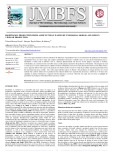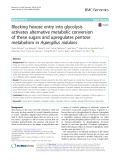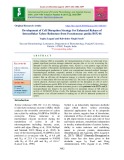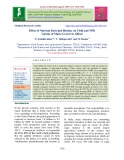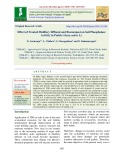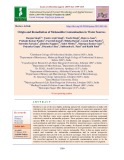
Sugar industry wastes
-
Ebook "Ion exchange technology II: Applications" presents an overview of the numerous industrial applications of ion-exchange materials. In particular, this volume focuses on the use of ion-exchange materials in various fields including chemical and biochemical separations, water purification, biomedical science, toxic metal recovery and concentration, waste water treatment, catalysis, alcohol beverage, sugar and milk technologies, pharmaceuticals industry and metallurgical industries.
 462p
462p  nhanphanguyet
nhanphanguyet
 28-01-2024
28-01-2024
 5
5
 2
2
 Download
Download
-
This review paper summarizes the best method for the utilization of agricultural wastes as raw material for the production of bioethanol. Agricultural wastes are rich in sugar and complex carbohydrates that makes it suitable source to carry out the fermentation process. Bioethanol is widely used in industries such as, chemical, pharmaceutical and food for various purposes especially as sterilizer.
 7p
7p  mudbound
mudbound
 10-12-2021
10-12-2021
 16
16
 1
1
 Download
Download
-
Plant biomass is the most abundant carbon source for many fungal species. In the biobased industry fungi, are used to produce lignocellulolytic enzymes to degrade agricultural waste biomass. Here we evaluated if it would be possible to create an Aspergillus nidulans strain that releases, but does not metabolize hexoses from plant biomass.
 14p
14p  vibeauty
vibeauty
 23-10-2021
23-10-2021
 8
8
 1
1
 Download
Download
-
Xylose reductase (XR) is responsible for biotransformation of xylose to xylitol and it has gained significant position amongst industrial enzymes due to its role in meeting the demand of xylitol by utilizing agriculture waste. Xylitol is a rare pentose sugar alcohol having a number of therapeutic and pharmaceutical applications. There is a paradigm shift for biotechnological production of xylitol over conventional chemical method.
 16p
16p  angicungduoc8
angicungduoc8
 07-11-2020
07-11-2020
 10
10
 1
1
 Download
Download
-
Agro-industrial wastes such as sugarcane bagasse, molasses and press mud are giving rise to huge amounts of agricultural residues. These wastes have the potential to supply feedstock for biochar production.
 9p
9p  chauchaungayxua8
chauchaungayxua8
 03-10-2020
03-10-2020
 9
9
 2
2
 Download
Download
-
In India, sugar industry is the second largest agro-based industry producing enormous quantities of by-products like molasses, pressmud etc. The Treated Distillery Effluent (TDE) is waste water, which could be recycled in agriculture both as irrigation water and as a source of plant nutrients.
 4p
4p  nguathienthan5
nguathienthan5
 04-06-2020
04-06-2020
 8
8
 1
1
 Download
Download
-
Distillery is one of the most highly polluting and growth oriented industries in India with reference to the extent of water pollution and the quantity of wastewater generated. Apart from distilleries, fermentation industries, sugar mills, pharmaceutical companies and other molasses based industries are also responsible for contamination and generation of waste water. The distillery waste water contains dark brown colored recalcitrant compounds collectively termed as melanoidin polymers. These polymers cause oxygen depletion and increase BOD.
 17p
17p  cothumenhmong1
cothumenhmong1
 08-12-2019
08-12-2019
 16
16
 0
0
 Download
Download
-
The global annual potential bioethanol production from the major crops, corn, barley, oat, rice, wheat, sorghum, and sugar cane, is estimated. To avoid con/icts between human food use and industrial use of crops, only the wasted crop, which is de0ned as crop lost in distribution, is considered as feedstock. Lignocellulosic biomass such as crop residues and sugar cane bagasse are included in feedstock for producing bioethanol as well. There are about 73:9 Tg ofdry wasted crops in the world that could potentially produce 49:1 GL year−1 ofbioethanol.
 15p
15p  nguyenngocsonctu
nguyenngocsonctu
 30-11-2010
30-11-2010
 127
127
 21
21
 Download
Download
CHỦ ĐỀ BẠN MUỐN TÌM










